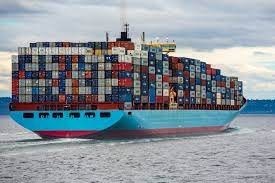The freight business of today is multiplying. The traditional constraints of the economy no longer bind it, and Amazon is gearing up to begin developing to be the best of the global freight transportation providers. As a result, your firm needs to think about these freight shipping aims and how you can plan to respond to them as soon as possible.
Freight shipping is essential during this online age. And the transporters have to make the right decision to choose a relevant truck for their operations. Many operators believe in the Tata Ace Gold truck for their in-city operations due to its high working efficiency and increased fuel mileage. Let’s have a look at 5 trends that can make your shipping business more profitable.
5 Shipping Trends for Shippers
1. Focus on ELD Implementation
With the official deadline for executing electronic logging devices shorter than one year apart, more freight transportation providers will be improving technology and systems. It will help ensure the best compliance, but additional commands will continue to push the business forward.

2. Hours of Service
Meeting the HOS (hours-of-service) requirements for operators will be a crucial concern among cargo shipping providers. In the past, operators were subject to fewer restrictions on necessary breaks and time off the road. However, the more modern HOS statutes mean that a few drivers will be able at any given time to get loads from location A to location B. Consequently, the driver shortage may grow more severe with this new perception.
3. Capacity Demand
Capacity is demanded to grow tighter and more significant in the coming year. In the past, freight demand raised each month consecutively, asserts Mark of Supply Chain Brief. Moreover, LTL (less-than-truckload) shipments grew faster than FT (full truckload). This trend will be pushed more as the year progresses as operators retire and the driver gains momentum.
4. Ocean Freight
Global ocean shipping market as international shipping opponents could not follow up with the online retailer’s growing demand for faster, cheaper shipping. Amazon now has its NVOCC (non-vessel-owning common carrier) license, which will enable the company to engage in shipping international containers.
Furthermore, Amazon also has expanded its dedicated aircraft for high-speed global and regional transportation. In other words, the firm is using money into its freight shipping methods to meet the requirement where shippers and local carriers cannot.
5. Automation
Robotics, virtual reality and automatic picking and packaging methods will reduce labour and shipping costs for the industry. Of course, automation begets self-regulation. In other words, the IIoT (Industrial Internet of Things) will be required to enable self-regulation, which will result in more comprehensive visibility and liability across an organization.
Furthermore, firms will respond to uncertain weather conditions, cybersecurity threats and interruptions in communication faster through the IIoT and automatic systems. Additionally, self-driving trucks (autonomous trucks) will also reduce the labour need while growing demand on the IIoT.
Freight is growing and getting more intelligent, faster and more sensitive to the demands of the business. With the promise of reshoring hope and achievable public backlash for staying offshoring manners, freight transportation providers will have the chance to restore public trust and improve profits. They required to take a report of what’s happening with freight transportation trends.